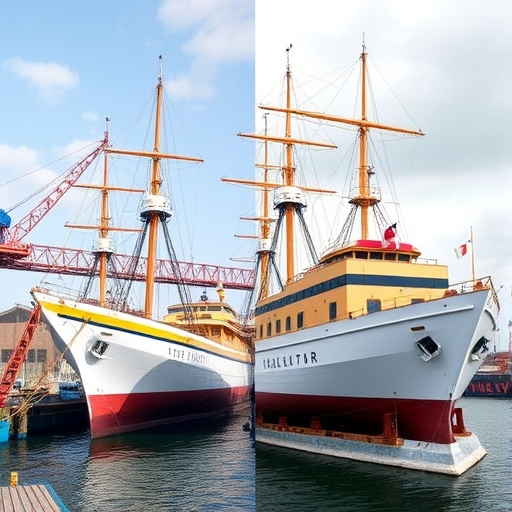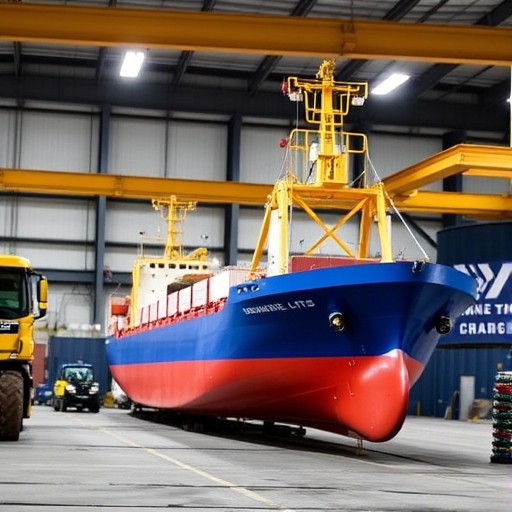BLOG
3 Differences Between Boat Building and Ship Building
Table of Contents
- Introduction: An Overview of Boat Building and Ship Building
- Key Differences Between Boat Building and Ship Building
- Purpose and Usage
- Size and Scale
- Materials and Construction Methods
- The Process of Building Boats
- Design and Planning
- Material Selection
- Assembly and Testing
- The Process of Ship Building
- Design and Engineering
- Fabrication and Construction
- Sea Trials and Delivery
- The Role of Peida Machinery Group Co., Ltd. in the Industry
- Products and Services
- Why Choose Peida Machinery Group Co., Ltd.?
- Future Trends in Boat and Ship Building
- Frequently Asked Questions (FAQ)
1. Introduction: An Overview of Boat Building and Ship Building

Boat building and ship building are two essential segments of the maritime industry. Although they share similarities, they serve distinct purposes, cater to different markets, and involve unique construction techniques. Understanding the differences is crucial for anyone looking to invest in or learn more about maritime manufacturing.
2. Key Differences Between Boat Building and Ship Building
Purpose and Usage
The primary difference lies in their intended use:
- Boats are typically used for recreational activities, fishing, or short-distance transport.
- Ships are designed for long-distance travel, cargo transport, military operations, and passenger services.
Size and Scale
- Boats are generally smaller and easier to maneuver, suitable for inland waterways or coastal areas.
- Ships, on the other hand, are large, complex vessels built for heavy-duty operations in open seas.
Materials and Construction Methods
- Boats often use fiberglass, aluminum, or wood, making them lighter.
- Ships are constructed primarily with steel and reinforced materials to withstand the harsh marine environment.
3. The Process of Building Boats
Design and Planning
Boat building begins with a detailed design phase. This includes:
- Drafting blueprints.
- Choosing the right hull shape for stability and speed.
Material Selection
Common materials used in boat building include:
- Fiberglass: Lightweight and corrosion-resistant.
- Aluminum: Durable and easy to mold.
- Wood: Traditional but requires more maintenance.
Assembly and Testing
The final stages involve assembling the hull, installing the engine, and conducting sea trials to ensure performance and safety.
4. The Process of Ship Building
Design and Engineering
Ship building is a much larger endeavor that starts with comprehensive engineering plans, taking into account:
- Load capacity.
- Navigation systems.
- Safety and regulatory compliance.
Fabrication and Construction
- Hull construction: The backbone of the ship is built using heavy steel plates.
- Integration of systems: Includes propulsion, electrical systems, and navigation technology.
Sea Trials and Delivery
Before delivery, every ship undergoes rigorous sea trials to test:
- Speed and maneuverability.
- Safety features and emergency protocols.
5. The Role of Peida Machinery Group Co., Ltd. in the Industry

Peida Machinery Group Co., Ltd. plays a significant role in both boat and ship building industries. Located in China’s Yangtze River region, this company specializes in designing, constructing, and trading a wide range of vessels.
Products and Services
Peida Machinery Group Co., Ltd. offers:
- Bulk shipping vessels.
- Container ships.
- Passenger ships.
- Oil tankers and chemical ships.
- Tugs and fiberglass boats.
- Engineering ships.
Additionally, they handle second-hand ships to cater to diverse client needs.
Why Choose Peida Machinery Group Co., Ltd.?
- Approved by Classification Societies.
- Diverse Product Range to meet global demand.
- High Standards in Design and Construction.
- Comprehensive Trade Services for new and used vessels.
6. Future Trends in Boat and Ship Building
Advancements in Materials
- Lightweight composites for boats.
- Eco-friendly steel for ships.
Automation and Smart Technology
- Autonomous navigation systems.
- Remote monitoring and diagnostics.
Sustainability
The industry is shifting towards:
- Green shipping technologies.
- Energy-efficient engines to reduce carbon footprints.
7. Frequently Asked Questions (FAQ)
1. Is boat building the same as ship building?
No, boat building and ship building differ significantly in terms of purpose, size, materials, and construction techniques. Boats are smaller and often used for recreational or short-distance purposes, while ships are larger and built for heavy-duty operations.
2. How long does it take to build a ship?
The time required to build a ship can range from 1 to 3 years, depending on the vessel’s size, complexity, and customization requirements.
3. Does Peida Machinery Group Co., Ltd. provide second-hand ships?
Yes, Peida Machinery Group Co., Ltd. offers a variety of second-hand ships to meet the budget and operational needs of its clients.
Whether you’re exploring boat building for personal use or ship building for commercial ventures, understanding these industries’ unique aspects is vital. With trusted companies like Peida Machinery Group Co., Ltd., you can find the perfect vessel tailored to your needs.
BLOG
News
Contact Us
Contact: Peida Machinery Group Co. ,Ltd.
E-mail: info@peidaship.com
Tel: 0086 0556 5248992
Phone: 008618855615637
Add: City Anqing, Anhui Province